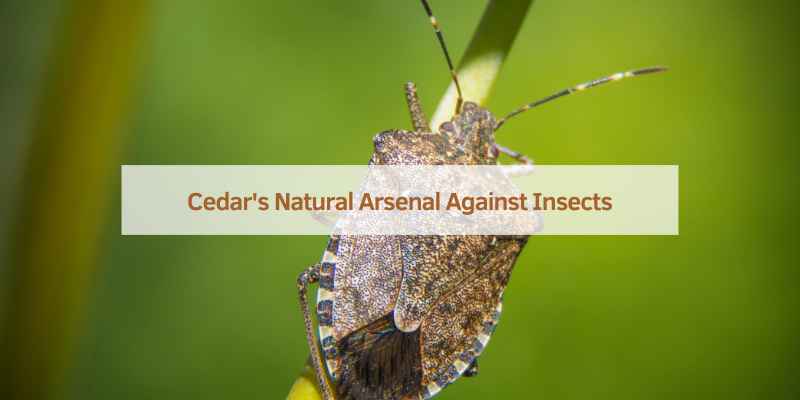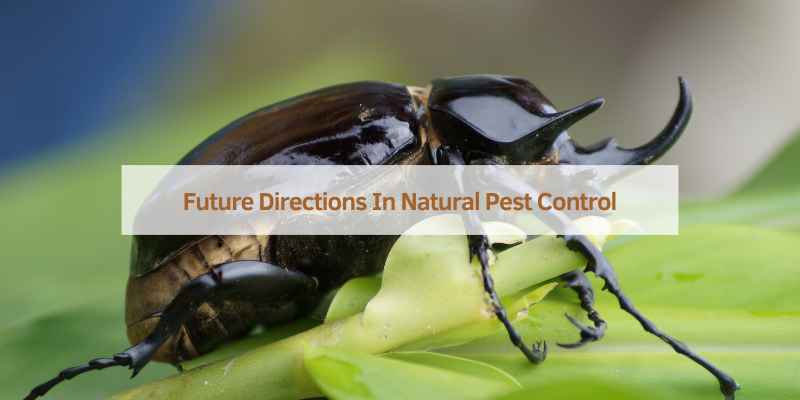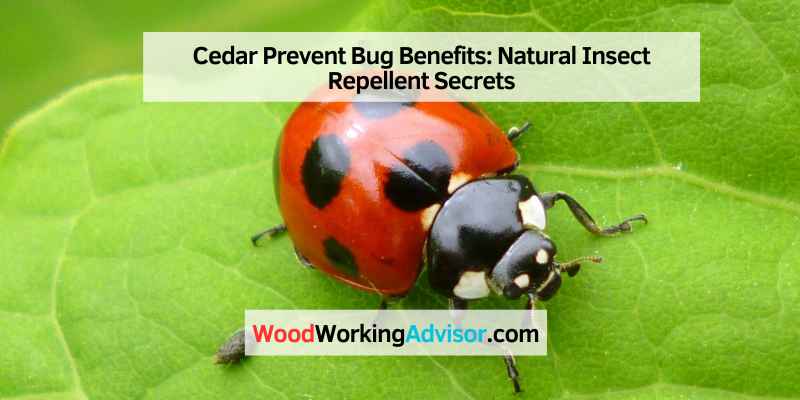Cedar naturally repels bugs and is effective in deterring a variety of insects, including clothing moths, silverfish, termites, carpet beetles, and cockroaches. Its repellency increases with exposure, making eastern red cedar a popular choice for insect-resistant wood.
Cedar can also be used in the form of balls, chips, or blocks to deter roaches and other bugs in the home. Additionally, cedar has been found to be effective in killing and preventing house dust mites. Its distinctive and pleasant earthy smell is a key factor in its ability to combat unwanted pests.
Cedar’s Natural Arsenal Against Insects
Cedar’s natural arsenal is a powerful deterrent against insects, including clothing moths, silverfish, termites, carpet beetles, and cockroaches. With heightened exposure, the eastern red cedar’s repellent properties increase, making it an effective bug repellent. Cedar’s ability to naturally repel bugs makes it an ideal choice for pest control without harmful chemicals.
Nature’s Chemistry: How Cedar Repels Bugs
Cedar wood has a natural arsenal against insects due to its unique chemical composition. The essential oils found in cedar wood contain compounds such as cedrol, thujopsene, and alpha-cedrene, which make it highly repellent to a wide range of insects. These compounds are toxic to insects, causing them to avoid cedar wood altogether. Additionally, the scent of cedar wood acts as a masking agent, making it difficult for insects to locate their prey.
A Spectrum Of Pests: Cedar‘s Repelling Range
Cedar wood is known for its ability to repel a wide range of pests. This includes adult clothing moths, clothing moth larvae, silverfish, termites, carpet beetles, and cockroaches, to name a few. Cedar wood’s insect-repelling power increases as exposure is heightened. Therefore, when cedar wood is used in closets, cabinets, and drawers, it creates a protective barrier that repels insects and keeps them at bay.
Cedar Products For Pest Control
There are a variety of cedar products available for pest control purposes. Cedar granules, blocks, and chips can be placed in areas where pests are likely to reside, such as closets, drawers, and attics. Cedar oil can also be used as a natural insecticide by diluting it and spraying it on surfaces. Cedar-based insect sprays are also available for outdoor use, which repel mosquitoes, ticks, and other biting insects.
In conclusion, cedar wood is a natural and effective insect repellent that can be used in a variety of ways to control pests. Its unique chemical composition and scent make it highly effective in repelling a wide range of insects. By using cedar products for pest control, you can create a safe and natural barrier against insects, without the use of harsh chemicals.

The Science Behind Cedar’s Protective Powers
Uncover the secret of cedar’s bug-repelling abilities. Cedar’s natural properties deter various insects, including clothing moths, silverfish, termites, and cockroaches. The insect-repelling strength of eastern red cedar intensifies with increased exposure, making it a powerful defense against unwanted pests.
Cedar Oil: A Potent Pheromone Disruptor
One of the key components that makes cedar a powerful bug repellent is cedar oil. Cedar oil contains natural compounds that act as potent pheromone disruptors, making it difficult for insects to communicate and coordinate their activities. Pheromones are chemical signals that insects use to communicate with each other, such as for mating, marking territories, or finding food sources.
The Role Of Cedarwood In Pest Prevention
Cedarwood, derived from the heartwood of cedar trees, plays a crucial role in pest prevention. The natural properties of cedarwood make it highly unattractive and even toxic to many common household pests. The strong aroma of cedarwood acts as a deterrent, repelling insects and preventing them from entering your home or infesting your belongings.
Moreover, cedarwood contains natural compounds that have insecticidal properties. These compounds are toxic to insects, causing damage to their nervous systems and ultimately leading to their demise. This makes cedarwood an effective and natural alternative to synthetic pesticides, without the harmful effects on the environment or human health.
Cedarwood’s insect-repellent properties have been known for centuries, with cedar chests and closets being used to protect clothing and linens from moth damage. The aromatic oils present in cedarwood act as a natural insect repellent, keeping moths, silverfish, termites, carpet beetles, and cockroaches at bay.
Furthermore, the level of repellency of cedarwood increases with prolonged exposure, making it a long-lasting solution for pest prevention. By incorporating cedarwood products in your home, such as cedar balls, chips, or blocks, you can create an inhospitable environment for bugs and keep your living spaces bug-free.
Cedar Solutions For Home And Garden
Cedar is a versatile and effective solution for keeping pests at bay in both your home and garden. From granules to sprays, there are a variety of eco-friendly cedar products that offer natural pest control without the use of harmful chemicals.
From Granules To Sprays: Cedar Products Overview
There are numerous cedar products available, catering to different pest control needs. From cedar granules to sprays, each product offers a unique approach to repelling pests in a safe and environmentally friendly manner.
Eco-friendly Pest Control With Cedar
Cedar is renowned for its natural pest-repelling properties, making it an eco-friendly alternative to chemical-based pest control methods. Its effectiveness in deterring a wide range of insects, including clothing moths, silverfish, termites, and cockroaches, makes it a popular choice for those seeking a non-toxic pest control solution.
Historical Uses Of Cedar In Pest Management
Cedar has been utilized for centuries to prevent bug infestations due to its natural repellent properties. It is effective against a variety of pests, including clothing moths, silverfish, termites, carpet beetles, and cockroaches. The insect-repelling power of cedar increases with prolonged exposure, making it an excellent natural pest management solution.
Traditional Practices: Cedar’s Time-tested Efficacy
The use of cedar for pest management dates back centuries, with ancient civilizations recognizing its potent insect-repelling properties. Traditional practices involved utilizing cedar wood, oils, and other derivatives to protect clothing, food supplies, and living spaces from pests. The effectiveness of cedar in repelling a wide range of insects has been well-documented throughout history.
Cedar Through The Ages: An Insect Repellent Legacy
Cedar has maintained a legacy as a natural insect repellent across diverse cultures and time periods. From ancient Egyptians using cedar oil in the embalming process to Native American tribes incorporating cedar boughs in storage areas to ward off pests, its efficacy has transcended generations. The enduring reputation of cedar as a reliable pest deterrent is a testament to its enduring effectiveness.
Cedar Vs Synthetic Repellents
When comparing cedar and synthetic repellents, it’s essential to consider their effectiveness and impact on safety and the environment.
Comparing Effectiveness: Cedar And Chemical Repellents
Cedar, known for its natural insect-repelling properties, is effective against a variety of pests such as clothing moths, silverfish, termites, and cockroaches. The level of repellency increases with prolonged exposure. In contrast, chemical repellents may offer immediate results but often come with risks due to their synthetic nature.
Safety And Environmental Impact Of Cedar Repellents
Cedar repellents are generally considered safe for humans and pets, posing minimal health risks compared to synthetic alternatives. Cedar is a renewable resource, making it environmentally friendly and sustainable. On the other hand, chemical repellents can have harmful effects on both health and the ecosystem.
Maximizing Cedar’s Repellent Properties
The natural insect-repelling properties of cedar make it a popular choice for bug control. By enhancing cedar exposure and utilizing DIY cedar solutions, you can maximize its repellent properties for optimal protection against a variety of pests.
Enhancing Cedar Exposure For Optimal Protection
1. Outdoor Cedar: Utilize cedar in outdoor spaces by incorporating cedar wood furniture, fencing, or decking to create a protective barrier against insects such as termites, cockroaches, and clothing moths.
2. Indoor Cedar: Introduce cedar elements indoors, such as cedarwood hangers, chests, or sachets, to repel pests like silverfish and clothing moth larvae from infesting your clothing and linens.
Do-it-yourself Cedar Solutions For Bug Control
1. Cedar Repellent Sprays: Create your own cedar repellent spray by mixing cedar essential oil with water and a small amount of dish soap. Use this solution to spray around your home’s entry points and potential bug hotspots.
2. Cedar Sachets and Blocks: Craft cedar sachets using cheesecloth or muslin bags filled with cedar chips, or simply place cedar blocks in areas prone to pest activity, such as closets, drawers, and storage containers.
3. Cedar Mulch: Use cedar mulch in your garden beds and around the perimeter of your home to deter insects like roaches and ants from infiltrating your outdoor spaces.
By incorporating these strategies, you can harness the full potential of cedar’s natural repellent qualities to protect your living spaces from a multitude of unwanted pests.
Real-life Applications And Testimonials
Cedar is known for its bug-repelling properties, effectively deterring various insects such as clothing moths, silverfish, termites, and cockroaches. Its insect-repelling power increases with exposure, making it a natural and effective solution for pest control. Customers have reported successful results in keeping bugs away with cedar-based products, making it a popular choice for natural pest prevention.
Consumer Experiences With Cedar As An Insect Repellent
Cedar is known for its natural insect-repellent properties, and many consumers have experienced its effectiveness in deterring bugs. One happy customer shared, “I placed cedar blocks in my closet and haven’t seen a single moth or silverfish since! It’s amazing how well it works.” Another satisfied user said, “I use cedar granules around the perimeter of my house to keep ants and spiders away. It’s a great alternative to harmful chemicals.”
Case Studies: Cedar’s Success Stories In Bug Prevention
Cedar has been used successfully in bug prevention in a variety of settings. One case study involved a hotel in a heavily wooded area that was experiencing a mosquito problem. After using cedar oil spray and cedar granules around the property, the mosquito population drastically decreased. Another case study involved a homeowner who was dealing with a termite infestation. By using cedar wood as a natural barrier, the termites were deterred and eventually eliminated.
Where To Find Cedar Products
Cedar products can be found at many home improvement stores and online retailers. Some popular options include Cedarcide insect-repelling cedar granules, cedar repel granules, and Cedar Green aromatic cedar blocks. Cedarcide also offers a variety of outdoor bug control solutions, including tickshield and yard-safe sprays. For those looking for a natural wood treatment, Cedarcide Cedarshield wood treatment is a great option.
Cedar’s natural insect-repellent properties make it a great alternative to harmful chemicals. With a variety of products available, consumers can easily incorporate cedar into their bug prevention routines.
Future Directions In Natural Pest Control
Cedar is known for its natural ability to repel bugs. It can deter a variety of insects, including clothing moths, silverfish, termites, carpet beetles, and cockroaches. Cedar’s insect-repelling power increases with increased exposure, making it an effective and eco-friendly option for natural pest control.
Innovations In Cedar-based Repellent Technologies
Cedar has been used as a natural insect repellent for centuries, but recent innovations in cedar-based repellent technologies have taken natural pest control to the next level. Cedar oil, which is extracted from the wood and foliage of cedar trees, contains compounds that repel a wide variety of pests, including mosquitoes, ticks, fleas, ants, and more.
One of the latest innovations in cedar-based repellent technologies is the use of cedar granules, which can be spread around outdoor areas to repel insects. Cedarcide Insect-Repelling Cedar Granules and Cedar Repel Granules are two popular options that are both effective and affordable. These granules can be used in gardens, on patios, or around the perimeter of a home to create a natural barrier against pests.
Sustainable Pest Management With Cedar
As concerns about the environmental impact of traditional pest control methods grow, there is a growing interest in sustainable pest management options. Cedar-based repellents are a great example of a sustainable pest management solution, as they are non-toxic, biodegradable, and renewable.
Cedar Green Aromatic Cedar Block is one example of a sustainable pest management solution that is both effective and eco-friendly. These blocks can be placed in closets, drawers, and other areas to repel moths, silverfish, and other pests, without the use of harmful chemicals.
Cedar As A Safe And Effective Alternative
Cedar-based repellents are a safe and effective alternative to traditional pest control methods. Cedarcide Outdoor Bug Control and Cedarcide Tickshield are two examples of cedar-based insect repellents that are safe for use around children and pets. These products can be used to repel mosquitoes, ticks, and other pests without the use of harmful chemicals.
Cedar-based repellents are also a great option for those with sensitive skin or allergies. Unlike traditional insect repellents, cedar-based repellents do not contain DEET or other harsh chemicals that can irritate the skin or cause allergic reactions.
In conclusion, cedar-based repellents are a natural, safe, and effective way to control pests. With innovative new technologies and a growing interest in sustainable pest management, cedar is quickly becoming a popular choice for those looking for a natural and eco-friendly pest control solution.

Frequently Asked Questions
Does Cedar Actually Repel Bugs?
Yes, cedar actually repels bugs. The eastern red cedar naturally deters a number of insects including clothing moths, silverfish, termites, carpet beetles, and cockroaches. Cedar is often considered the gold standard for rot and insect-resistant wood trim and has been used as a natural deterrent for bugs for many years.
Its level of repellency increases as exposure is heightened. Cedar’s distinctive and pleasant earthy smell is its superpower in combatting unwanted bugs, snakes and rodents.
What Wood Keeps Bugs Away?
Cedar wood naturally repels bugs due to its significant insect-repelling properties, deterring various insects like moths, termites, silverfish, and cockroaches.
Will Cedar Keep Roaches Away?
Cedar naturally deters roaches and other insects due to its repellent properties. Cedar balls, chips, or blocks placed in the home can help deter cockroaches effectively.
Does Cedar Repel Mites?
Yes, cedar does repel mites. Cedar has natural properties that deter a wide range of insects, including mites. Its effectiveness in repelling pests increases with prolonged exposure. Cedar’s insect-repelling power makes it an excellent choice for preventing mites and other bugs.
Conclusion
Cedar is a powerful natural bug repellent, deterring various insects like moths, roaches, and mites. Its effectiveness increases with exposure, making it a valuable option for pest control. Consider using cedar products to keep your home bug-free in an eco-friendly way.


